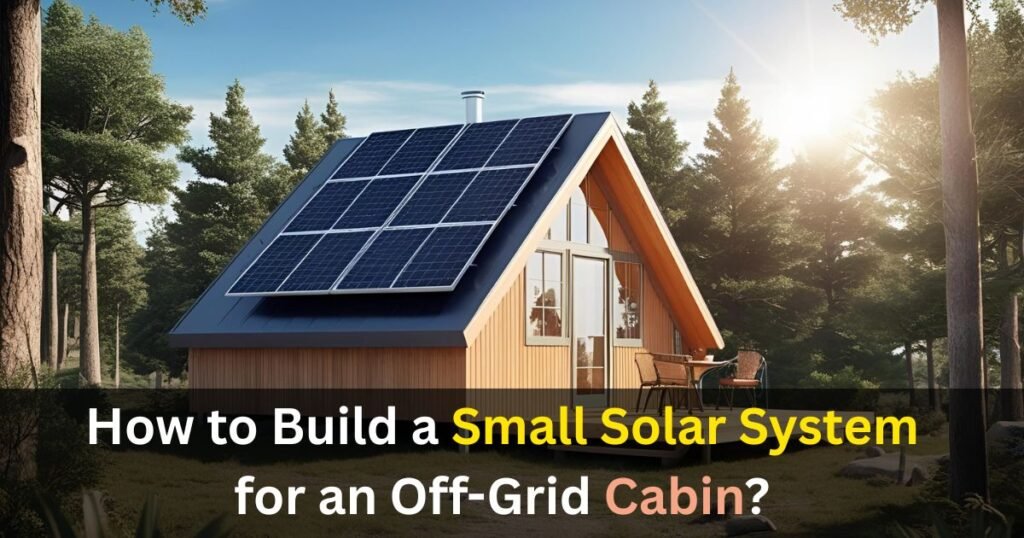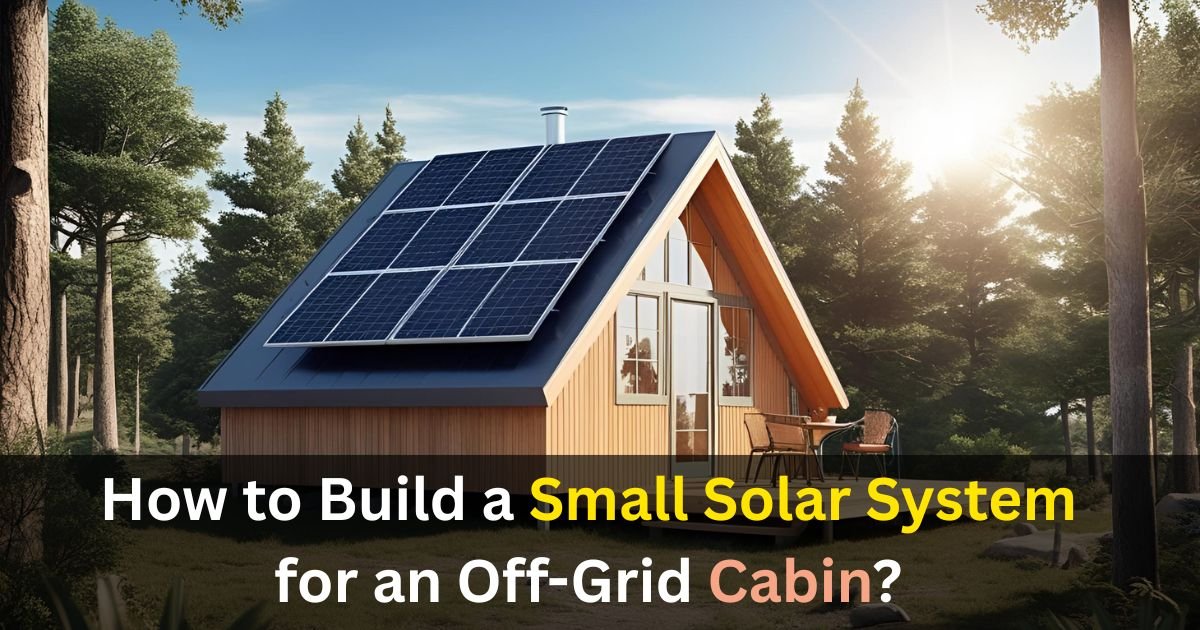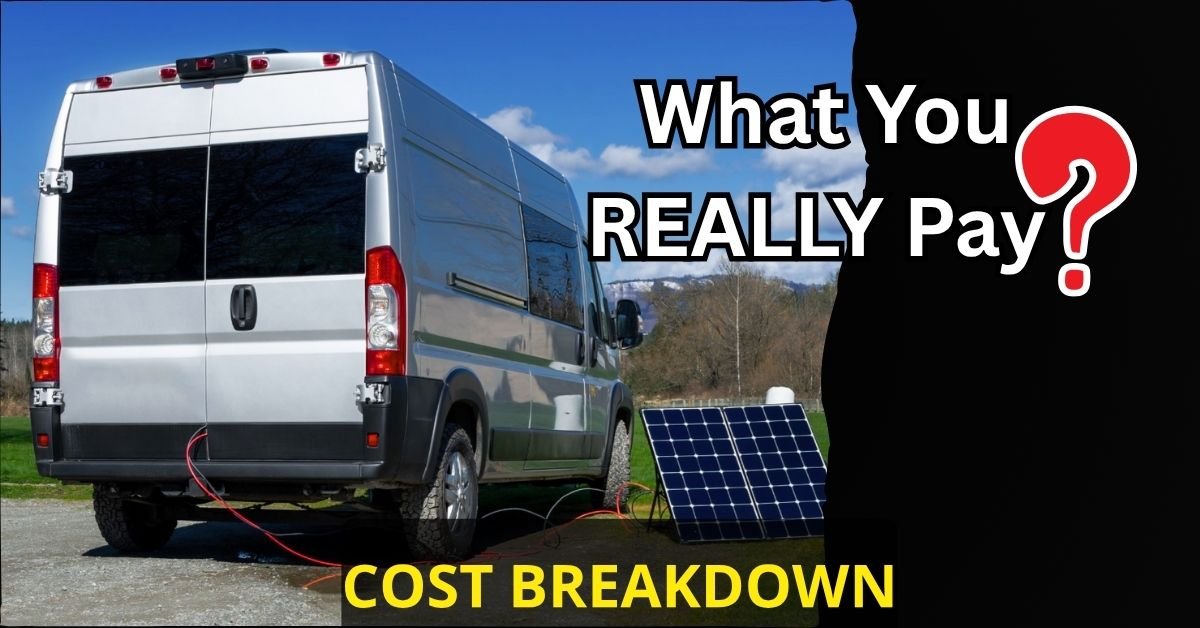Imagine waking up to birds chirping, brewing coffee with solar power, and enjoying uninterrupted electricity, all without a monthly utility bill. A small solar system for your cabin can make this dream a reality.
Whether you’re prepping for off-grid living or just want a sustainable backup, this DIY guide will walk you through everything you need to know from calculating power needs to installation and maintenance.
You can read: 10 Must-Have Tools for DIY Solar Panel Installation.
Introduction to Off-Grid Solar
Going off-grid with solar power is an eco-friendly and cost-effective way to energize your cabin. Unlike grid-tied systems, an off-grid setup relies entirely on solar panels, batteries, and charge controllers to store and distribute electricity.
Why choose solar for your cabin?
✔ Energy independence: No reliance on utility companies
✔ Lower long-term costs: Eliminate monthly electricity bills
✔ Eco-friendly: Reduce your carbon footprint
✔ Remote access: Power your cabin even in secluded areas
Power Needs Calculation
Before buying any equipment, determine how much energy your cabin requires.
Step 1: List Your Appliances & Their Wattage
| Appliance | Wattage (W) | Hours Used/Day | Daily Consumption (Wh) |
| LED Lights | 10W | 5 | 50 |
| Laptop | 50W | 4 | 200 |
| Refrigerator (DC) | 100W | 8 | 800 |
| Phone Charger | 5W | 2 | 10 |
Step 2: Calculate Total Daily Energy Consumption
Add up the “Daily Consumption” column. For the example above: 50 + 200 + 800 + 10 = 1,060 Wh (or 1.06 kWh per day)
Step 3: Factor in Efficiency Loss (30%)
Solar systems aren’t 100% efficient. Multiply by 1.3 to account for losses: 1.06 kWh × 1.3 = ~1.38 kWh needed daily
Step 4: Determine Solar Panel & Battery Capacity
- Solar Panels: Assume 5 peak sun hours/day → 1.38 kWh ÷ 5h = 276W solar array (Round up to 300W).
- Battery Bank: To cover 1-2 cloudy days, aim for 2-3 kWh storage (e.g., two 12V 200Ah batteries).
How to Build a Small Solar System for Cabin
Now that you know your energy needs, let’s move on to the fun part: building your solar setup!

Components You’ll Need
✅ Solar Panels (300W – 400W total): Monocrystalline for efficiency.
✅ Charge Controller (PWM or MPPT): MPPT is more efficient.
✅ Deep-Cycle Batteries (12V or 24V): AGM or Lithium for longevity.
✅ Inverter (Pure Sine Wave): Converts DC to AC for appliances.
✅ Wiring & Connectors: 10 AWG for panels, thicker for batteries.
✅ Mounting Hardware: Roof or ground-mounted racks.
✅ Fuses & Breakers: Safety first!
(Pro Tip: Buy a complete solar kit to save time and ensure compatibility.)
Affiliate Tip: Check out this link for high-quality solar kits tailored for cabins!
Wiring and Setup Instructions
Setting up your small solar system for a cabin is straightforward if you follow these steps:
- Panel Placement: Mount panels in direct sunlight, angled toward the equator.
- Connect Panels to Charge Controller: Use MC4 connectors and ensure correct polarity.
- Hook up Battery Bank: Connect the charge controller to your batteries.
- Install Inverter: Connect the batteries to the inverter.
- AC Wiring to Cabin: Run the inverter’s AC output to a breaker panel or power strip inside.
Safety Tip:
- Always use fuses or circuit breakers between components to prevent overloads or fire.
- Always disconnect batteries before wiring to avoid sparks.
Budget Breakdown
Building a small solar system for a cabin varies depending on the size and quality of components. Here’s an approximate cost breakdown:
- Solar Panels: $200-$400 per panel
- Charge Controller: $50-$150
- Battery Bank: $300-$1,000
- Inverter: $100-$300
- Miscellaneous (wiring, mounts): $100-$200
Total Estimated Cost: $750 up to $2,050
Note: Prices may vary based on brand, availability, and location.
Pros:
- Lower long-term costs compared to traditional utilities.
- Environmentally friendly.
Cons:
- Initial investment can be steep.
- Requires regular maintenance.
Maintenance Tips
- Clean Panels Regularly: Dust, leaves, and snow can block sunlight. Gently wipe them down every few months.
- Inspect Connections: Periodically check wiring and connections for corrosion or wear.
- Monitor Battery Health: Keep an eye on battery levels and replace them as needed (typically every 5-10 years).
- Trim Vegetation: Ensure no trees or branches shade your panels.
- Bonus Tip: Invest in a monitoring system to track performance and identify issues early.
- Pro Tip: Install a Bluetooth charge controller for remote monitoring via your smartphone.
Final Thoughts,
Is a Small Solar System Right for Your Cabin?
Pros:
✔ Sustainable & cost-effective long-term
✔ No grid dependency
✔ Quiet and low maintenance
Cons:
❌ High upfront cost
❌ Requires proper sizing and installation
❌ Limited power in cloudy weather (consider a backup generator)
You can read: 7 Best Solar Power Banks for Camping.
Ready to take the first step toward solar independence? Start exploring solar kits today and transform your cabin into a self-sufficient paradise. Share your progress or questions in the comments below, I’d love to hear about your journey!
🚀 Ready to Go Solar? Browse our recommended solar kits [affiliate link] or leave a comment with your questions!By following this guide, you’ll have a reliable small solar system for your cabin that keeps the lights on, naturally! 🌞🔋











